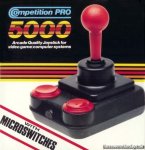That mechanism makes a stick much more prone to break.
Sorry, but this just isn't the case. Yes, it adds complexity, but only that. A decently built device will have no problem at all. Generally speaking, what breaks a stick is
abuse. Many gamers slam a stick around, rather than moving it gently as you would in real life. Barring a defect, that's what actually breaks most peripherals, gaming or otherwise. As an example, most folks say a membrane based keyboard won't last more than a couple years. With my kids, who are hard on things despite my telling them to be more careful, this is true. I, however, had one last 17 years and only just had to replace it because a couple buttons began acting up. The same is true of HOTAS setups. I owned one of the X52s for several years and used it at least a couple days a week during that time. When I sold it a couple years ago, it was just as good as new. I've had one of the X55s for nearly a year ow and the same is true of it.
Now, it is true that a Warthog stick is very well built and can tolerate such abuse. To say that other devices are less well designed is simply unfair, however. The Warthog is, by all industry measures, extremely over-built. How do I know this beyond just my sue? I used to work in the Microsoft Hardware group. I worked mainly in second level support, so I dealt with many cases of broken products but I was also tasked to assist the design teams in where the most common issues came up. I was directly involved in the design of the Sidewinder FF2, for example. We also tore apart many devices to see how they compared. So this isn't just the opinion of a guy who's owned flight sticks for well over 3 decades, but is also the opinion of a professional who's worked in the space.
Now, by all means, if you have the funds for it and the space for rudders, get a Warthog! Many do not, however, and to say that a twist adds more tendency to break to any stick is simply unfounded beyond the fact that more things are there which
might break or be defective.
If one should try a different concept I would go for a dual joystick solution.

